The most Influential Serbian Female Rulers
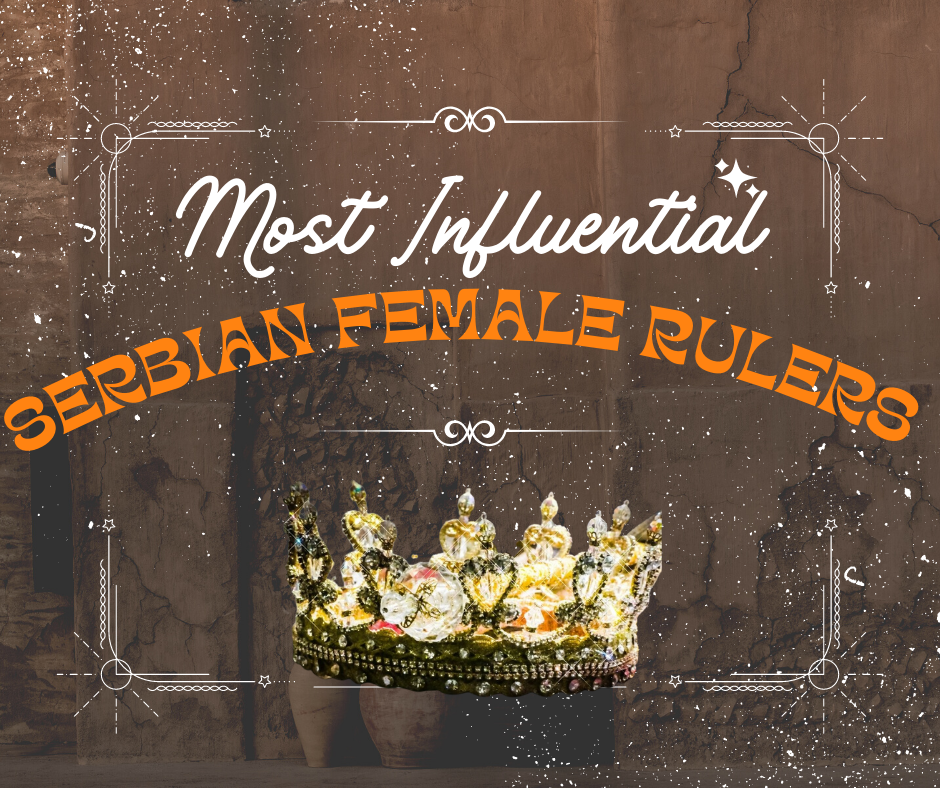
Happy New Year! Welcome to 2023!
What better way to start off this year than talking about powerful women that shaped Serbian history and the future? Many women rulers had enormous influence at court – or their husbands – in conducting the internal and foreign policy of Serbia. Some of them even openly governed the Serbian state after their husbands’ passing.
2017 saw the coming of Ana Brnabić, the first female Prime Minister of Serbia, and her rise to power hasn’t really been welcomed wholeheartedly. Not because she is a woman. But let’s not get into the current political affairs when we have so many historical ladies in power to talk about.
Helen of Anjou
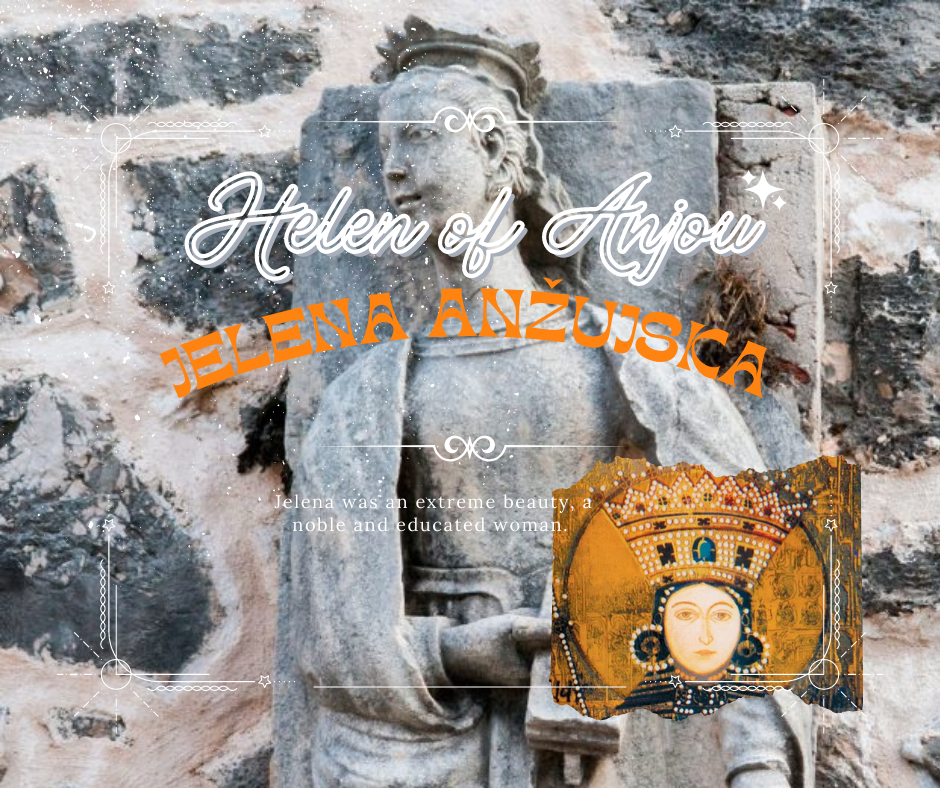
Jelena Anžujska, or Helen of Anjou, was the queen consort of King Stefan Uroš I (Uroš the Great) who ruled from 1243 to 1276. Their harmonious marriage resulted in two Serbian kings: Stefan Dragutin and Stefan Milutin.
As a dowager–queen, she held the provincial governorship of regions of Zeta and Travunija, built numerous Serbian Orthodox places of worship (Gradac monastery being the most famous one), and is revered as a saint by the Christian Orthodox church.
Jelena is quite possibly the most famous queen of the venerated Nemanjić dynasty. Her origin is hazy, though. She is believed to be a relative of the Neapolitan King Charles of Anjou and Louis IX who ruled France, but historians are still uncertain.
According to her contemporaries, Jelena was an extreme beauty, a noble and educated woman. Quickly after marrying King Uroš, she established a significant influence over her people. The most famous story of Jelena and Uroš is that of their wedding day. Namely, waiting for Jelena’s wedding procession, Uroš planted lilacs down the road she was supposed to pass to give him her hand in marriage. He wanted to mimic the picture-perfect Mediterranean landscape to remind his future wife of the place she grew up in.
Now, is that the basis for a hard-core Hollywood romantic movie, or what?
Princess Milica of Serbia

MIlica Hrebeljanović, popularly called Milica of Serbia, was the wife of Prince Lazar, one of the most beloved and influential rulers in Serbian medieval history. She was a direct descendant of the famous Nemanjić dynasty.
Prince Lazar might have married her for his own liking, but there is a more plausible explanation for this marriage. Marrying Milica with a noble royal pedigree elevated his position among other Serbian regional lords, thus gathered more power – and, presumably, wealth.
After Lazar’s death at the Battle of Kosovo (1389), she acted as the ruler of Serbia on behalf of her minor son, despot Stefan Lazarević. Loss at the Battle of Kosovo fell hard on the Christian realm, but Milica stood steadfast and negotiated with the victorious Ottoman Turks skillfully. She managed to preserve Serbian statehood, most likely by marrying her daughters away to powerful Serbian nobility and the enemy – her youngest Olivera was given to the sultan of the Ottoman Empire, Bayezid I.
Fighting the Ottoman Turks at one end and keeping the Serbian nobility at bay at the other wasn’t easy – and at that time, certainly wasn’t easy for a woman. Milica Hrebeljanović had four daughters, all of them married off to kings and princes in the close vicinity. As a ruler, those were strategic moves that kept her people swimming in shark-infested waters. As a mother, not so much.
Pre-husband, husband, or no husband, the influence of this powerful woman was medieval-mighty.
Princess Ljubica Obrenović
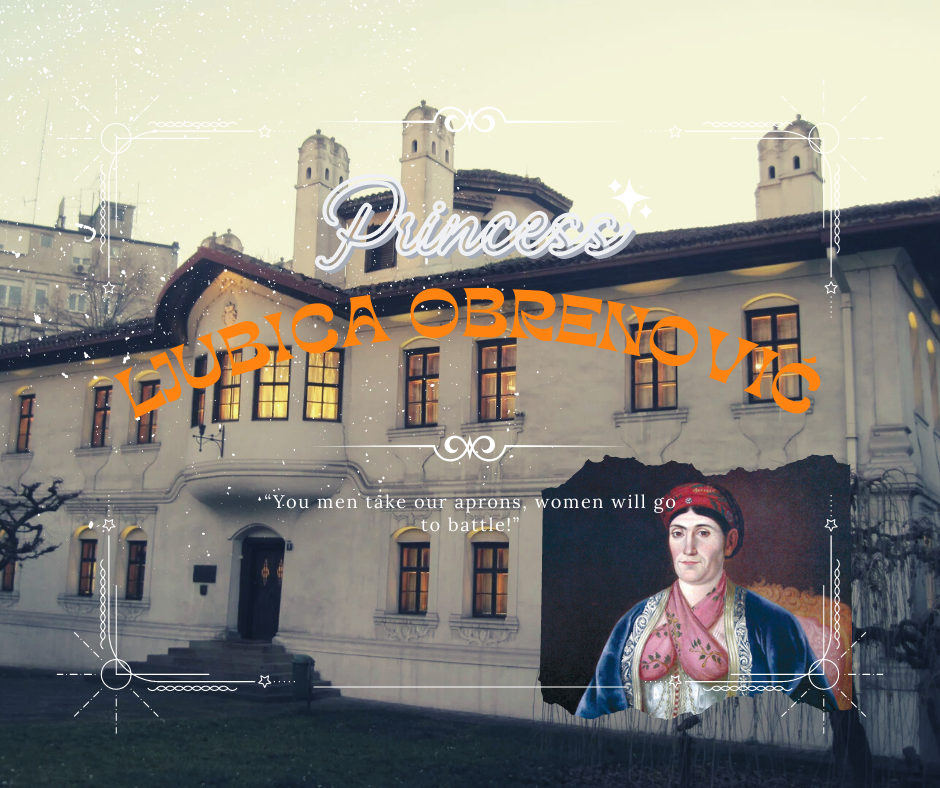
Ljubica Vukomanović, married Obrenović, was Princess consort of the Principality of Serbia (de facto still under the Ottoman rule) as the wife of Prince Miloš Obrenović. The dynasty they founded ruled Serbian in an almost unbroken line until 1903.
When the girl from the respectable Vukomanović family married Miloš who had nothing to his name, a few eyebrows were raised. Luckily for both of them, Miloš Obrenović became a Serbian military champion, a prince, and the founder of modern Serbian statehood.
Ljubica and Miloš ruled together. Both in their private life and in politics, she was his greatest support but also his harshest critic; as any fine woman should be. Despite great love and support, her husband often found comfort in the arms of other women. Ljubica handled her husband’s mistresses with dignity, ran the household, raised their children, and led politics.
A well-known anecdote circles historians – but funny enough, not history books – related to the Battle of Ljubić. During the revolutionary war with the Ottomans, Serbian insurgents started hesitating: the losses were great and the enemy steadfast. Ljubica appeared in front of them at a military consultation, uninvited, and most likely unwanted, and said: “You men take our aprons, women will go to battle!”
Queen Natalia Obrenović
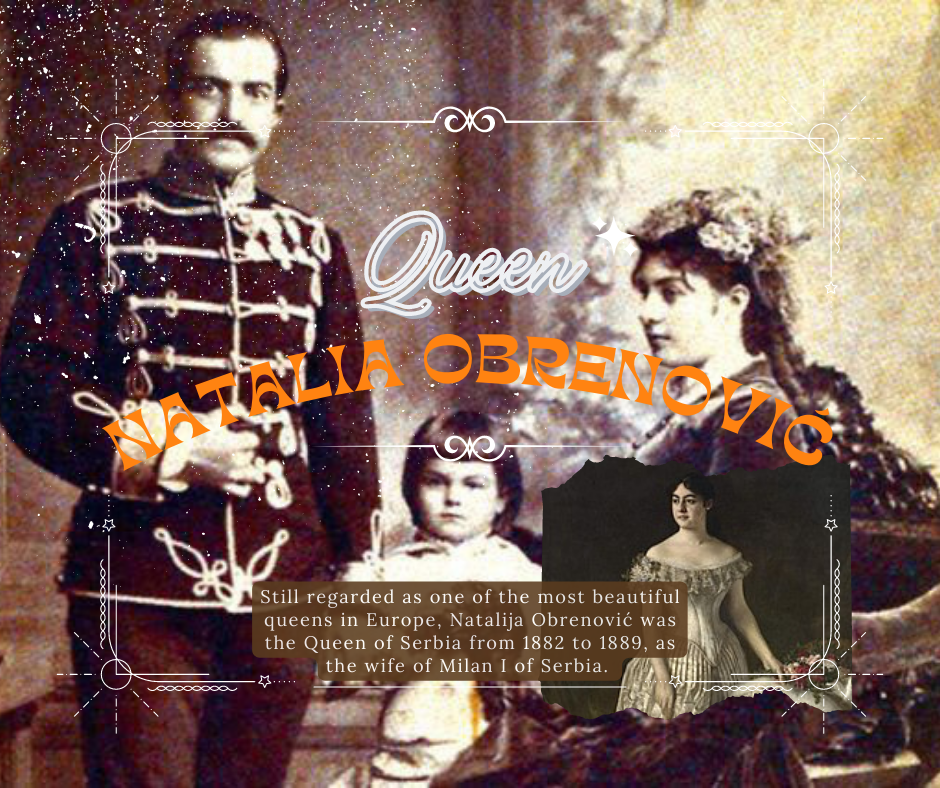
Still regarded as one of the most beautiful queens in Europe, Natalija Obrenović was the Queen of Serbia from 1882 to 1889, as the wife of Milan I of Serbia. She was of Romanian, Moldavian, and Russian descent. During her reign, the country gained independence and the royal crown returned to Serbia.
Natalija, too, suffered infidelity and carelessness in marriage. Their tumultuous relationship finally ended in a divorce. Their relationship could also be mirrored in their interests for Serbia. Namely, King Milan was eager to become close friends with the Austro-Hungarian Empire and tie Serbia to their interests, but Natalija leaned more towards Russia. Blood’s thicker than water.
When her son married a lady of the court, a woman with no royal or political background, Natalija completely broke off relations with King Aleksandar. Eventually, she outlived her husband and her son who was assassinated in a bloody coup in 1903.
The most beautiful queen in Europe never stopped helping Serbia. She pulled all her strings for our country during World War I. Becoming the sole survivor of the Obrenović dynasty, Natalija donated her inheritance to the University of Belgrade and various churches and monasteries in Serbia.
Queen Marija Karađorđević
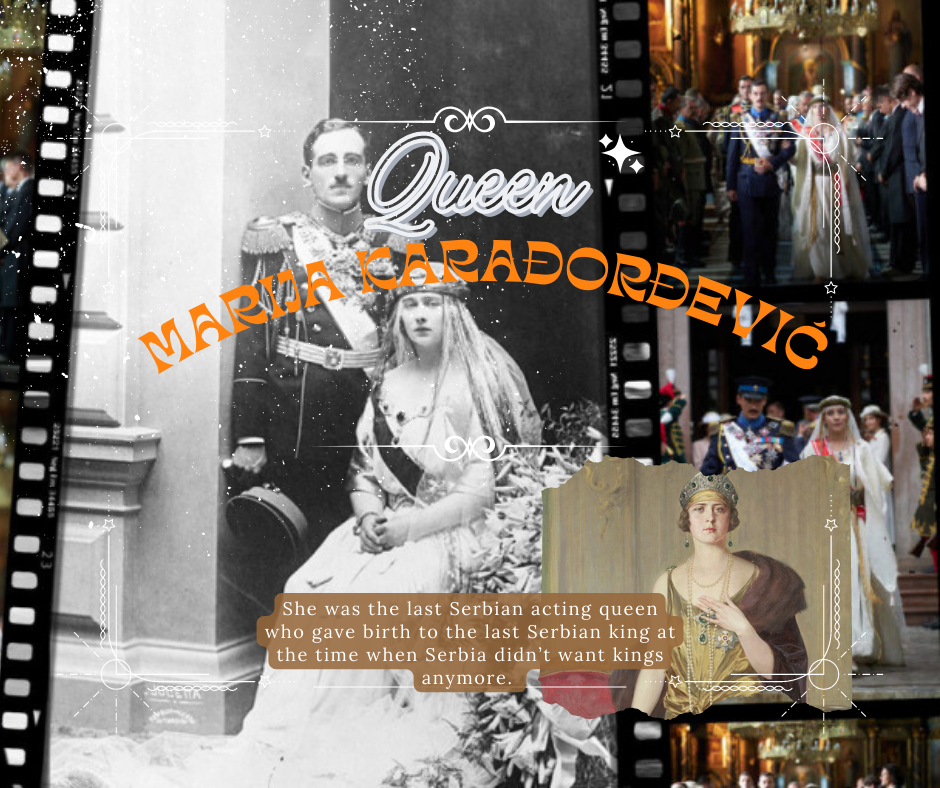
The Obrenović dynasty fell, but another rose the dynasty of. I know it’s difficult to pronounce it if you’re not Serbian, but the name of Karađorđević is a proud one in Serbian history. And with grand names come grand people.
Daughter of Romanian King Ferdinand Hohenzollern and great–granddaughter of Queen Victoria of England, Princess Maria of Romania was Queen of the Serbs, Croats, and Slovenes. Also known as Maria of Yugoslavia, she was the wife of King Aleksandar (yes, another Aleksandar) from 1922 until his assassination in 1934 (yes, another assassination). She was also the mother of Peter II, the last reigning Yugoslav monarch.
During World War II, Queen Marija was in exile. That didn’t stop her from collaborating with the Red Cross Committee through which she sent humanitarian aid to Yugoslavia. However, after the war, when the communist regime was quickly established, her citizenship was revoked and all her property confiscated in 1947.
She continued living in exile, never allowed to return to the country. The great Queen of Yugoslavia engaged in agriculture and could often be seen working in the fields in Kent. She was the last Serbian acting queen who gave birth to the last Serbian king at the time when Serbia didn’t want kings anymore.
Regardless of origin and fate, all Serbian queens, princesses, and consorts were great women of power, stature, and love for the country. They were mothers who lost sons, rulers who sent off daughters for political stability, astute leaders, and women of importance. Their legacies live on even in the futuristic 2023 when women still have to claw their way to the top.
Truly yours,
Vanja
